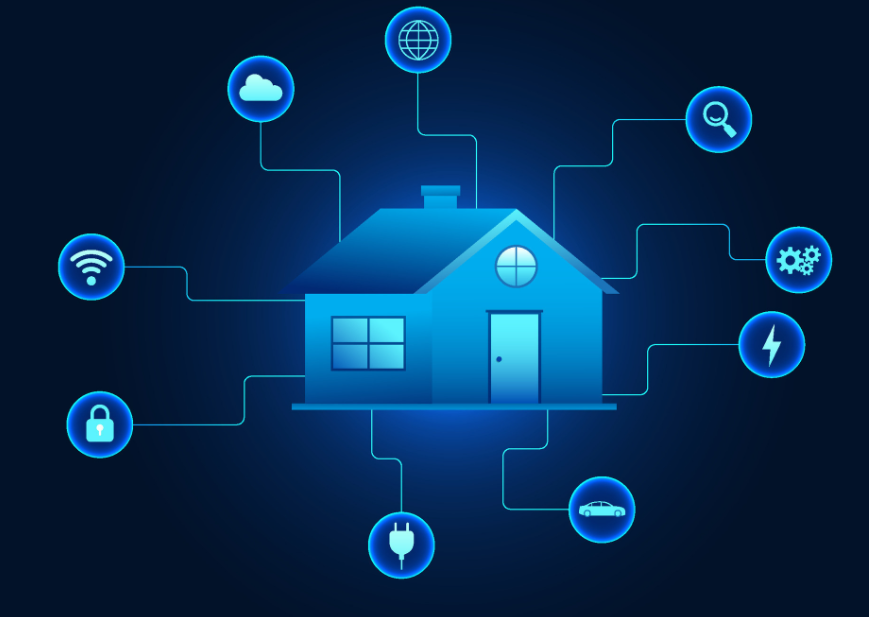the proliferation of Internet of Things (IoT) devices has transformed our homes into smart, interconnected ecosystems. From smart thermostats to voice-activated assistants, IoT devices offer convenience and efficiency like never before. However, with this convenience comes an increased risk of cyber threats. Securing IoT devices at home is crucial to protect your privacy, data, and the overall integrity of your smart home network.
In this guide, we’ll explore the best practices to secure IoT devices at home, ensuring your connected gadgets are safe from potential cyber threats.
What Are IoT Devices?
IoT (Internet of Things) devices refer to a network of physical objects that connect to the internet and communicate with each other. These devices can include anything from smart home appliances, security cameras, wearables, and even smart light bulbs. The key feature of IoT devices is their ability to collect and exchange data over a network without requiring human intervention.
While IoT devices bring a level of convenience and automation to our lives, they also introduce vulnerabilities that can be exploited by hackers if not properly secured.

Why Is IoT Security Important?
IoT security is critical because these devices often have weaker security measures compared to traditional computers and smartphones. Many IoT devices are designed with limited processing power and memory, making it challenging to implement robust security features. Additionally, IoT devices are always connected to the internet, increasing their exposure to potential cyber threats.
A compromised IoT device can be exploited to gain access to your home network, leading to data breaches, privacy invasions, and even physical security risks if devices like smart locks or cameras are hacked.
Common IoT Security Threats
Default Password Vulnerabilities
Many IoT devices come with default usernames and passwords that are easily guessable or widely known. Hackers can exploit these default credentials to gain unauthorized access to your devices.
Unencrypted Communication
Some IoT devices transmit data without encryption, making it easier for attackers to intercept and manipulate the data being exchanged.
Outdated Firmware
Manufacturers may release updates to fix security vulnerabilities, but if the device’s firmware is not updated regularly, it can remain exposed to known threats.
Botnet Attacks
Compromised IoT devices can be hijacked to form a botnet, which can then be used to launch large-scale cyberattacks, such as Distributed Denial of Service (DDoS) attacks.
Privacy Invasions
Smart home devices with cameras or microphones can be exploited to spy on users, leading to serious privacy concerns.
How to Secure IoT Devices at Home
1. Change Default Passwords Immediately
One of the first steps to securing your IoT devices is to change any default usernames and passwords. Use strong, unique passwords that combine letters, numbers, and special characters. Avoid using easily guessable information like birthdays or common words.

2. Enable Two-Factor Authentication (2FA)
Whenever possible, enable two-factor authentication on your IoT devices. 2FA adds an extra layer of security by requiring a second form of verification, such as a text message or authentication app, in addition to your password.
3. Regularly Update Firmware
Keep your IoT devices up to date by regularly checking for and installing firmware updates. These updates often include patches for security vulnerabilities and are crucial for keeping your devices secure.
4. Use a Secure Wi-Fi Network
Ensure that your home Wi-Fi network is secured with a strong password and encryption, such as WPA3. Additionally, consider setting up a separate network for your IoT devices, isolating them from your primary devices like computers and smartphones.
5. Disable Unnecessary Features
Many IoT devices come with features that you may not need or use. Disabling unused features, such as remote access or voice activation, can reduce the attack surface and minimize potential vulnerabilities.
6. Monitor Network Traffic
Use network monitoring tools to keep an eye on the traffic coming in and out of your IoT devices. Unusual activity could indicate a security breach, allowing you to take action before significant damage occurs.
7. Invest in a Firewall and Antivirus
Consider using a firewall to block unauthorized access to your IoT devices. Additionally, install antivirus software on your devices where applicable, especially on smart home hubs and routers.
8. Consider Device Placement
Be mindful of where you place IoT devices with cameras or microphones. Avoid placing them in private areas like bedrooms or bathrooms, where a security breach could have more severe consequences.
9. Factory Reset Before Disposal
Before disposing of or selling an IoT device, perform a factory reset to erase all personal data and settings. This ensures that the next owner cannot access your information.
10. Educate Family Members
Finally, educate everyone in your household about IoT security best practices. Ensure that everyone understands the importance of strong passwords, recognizing phishing attempts, and maintaining device security.
The Role of Manufacturers in IoT Security
While consumers play a significant role in securing their IoT devices, manufacturers also bear a responsibility. IoT manufacturers should prioritize security during the design and development of their products. This includes providing regular updates, enabling strong default security settings, and educating users on how to secure their devices.
Advocating for better IoT security standards and encouraging manufacturers to adhere to these standards can lead to a safer and more secure IoT environment for everyone.
Future Trends in IoT Security

As the number of IoT devices continues to grow, so too will the sophistication of cyber threats. Future trends in IoT security may include:
- AI-Powered Threat Detection: Artificial intelligence and machine learning will play a significant role in detecting and responding to IoT threats in real-time.
- Blockchain for IoT Security: Blockchain technology could be used to create a decentralized security framework for IoT devices, making it more difficult for hackers to manipulate or breach systems.
- Enhanced Privacy Controls: With growing awareness of privacy concerns, IoT devices may come with more advanced privacy controls, giving users greater control over their data.
Conclusion
Securing IoT devices at home is not just about protecting individual gadgets—it’s about safeguarding your entire digital life. By following the best practices outlined in this guide, you can significantly reduce the risk of cyber threats and ensure that your smart home remains a safe and secure environment.
As the IoT landscape continues to evolve, staying informed about the latest security trends and technologies will be crucial. Remember, a secure smart home starts with proactive measures and a commitment to ongoing vigilance.

